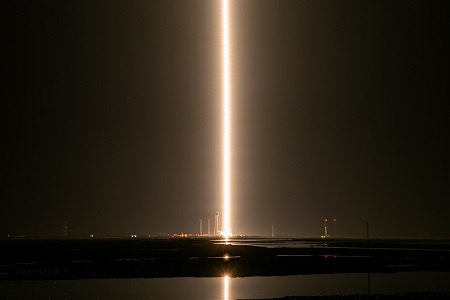The vehicle is designed to accommodate payloads of up to 700 kilograms for suborbital tests.
 Rocket Lab launched its first suborbital testbed launch vehicle, called HASTE (Hypersonic Accelerator Suborbital Test Electron) for a confidential customer.
Rocket Lab launched its first suborbital testbed launch vehicle, called HASTE (Hypersonic Accelerator Suborbital Test Electron) for a confidential customer.
The inaugural launch took place from Rocket Labs Launch Complex 2 at Virginias Mid-Atlantic Regional Spaceport within NASAs Wallops Flight Facility.
The HASTE suborbital launch vehicle is derived from the companys Electron rocket but has a modified Kick Stage for hypersonic payload deployment, a larger payload capacity of up to 700 kg / 1,540 lbs, and options for tailored fairings to accommodate larger payloads, including air-breathing, ballistic re-entry, boost-glide, and space-based applications payloads. By leveraging the heritage of Rocket Labs low-cost Electro, HASTE offers commercial testing capability at a fraction of the cost of current full-scale tests.
Brian Rogers, Senior Director Global Launch Services, said: The success of this mission demonstrates collaboration across government and industry partners to change the paradigm in hypersonic testing. HASTE enables the frequent, affordable flight testing needed to advance the nations hypersonic technology development, and were proud to be delivering this vital capability. We thank our mission partners for entrusting us with this inaugural mission and look forward to continuing our partnership into the future.
HASTE will be primarily operated under Rocket Lab National Security (RLNS), the companys wholly-owned subsidiary created to serve the needs of the US defence and intelligence community and its allies. Rocket Lab Launch Complex 2 within the Mid-Atlantic Regional Spaceport at NASA Wallops Flight Facility in Virginia is the launch site for HASTE.
















































































